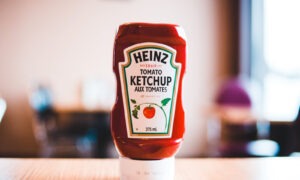The fear of shellfish is known by the Latin name, Ostraconophobia. This phobia may develop due to allergies, or due to food poisoning. However it occurs, the fear of shellfish can cause its sufferers to avoid restaurants or public dinners where the protein may appear.Shellfish is often used as an example of a foodstuff that causes frequent bouts of severe food poisoning. The freshness of shellfish can affect its healthiness for human beings. When shellfish is old or otherwise spoiled, its effects can be severe and even deadly.
Triggers For Fear Of Shellfish
There are four types of shellfish poisoning – some of them are triggered by marine biotoxins that produce symptoms such as stomach pain, burning sensations on the lips and other parts of the face, and severe intestinal distress. In some cases, the presence of toxins such as saxitoxin can cause death in the afflicted.
Poisoning Occurs In Humans And Other Creatures
Animals who inhabit the water can also suffer from food poisoning due to shellfish ingestion. Sea otters have died by eating toxic butterclams or other forms of shellfish.
Even huge whales have been brought down by attempting to digest mackerel or other fish that contains the deadly toxins. These harmful toxins affect the central nervous system.
Allergies To Shellfish Are Common
Shellfish allergies are quite common, and they remain a primary trigger for Ostraconophobia. Those diagnosed with shellfish allergy may react to algae bloom present on the seafood. They may also react to the toxins described above.
The fear of an adverse reaction to shellfish has been known to inhibit its sufferers, causing them to take extreme measures in order to protect themselves from the ill effects of the allergen. In dire cases, those who fear shellfish may actually become anorexic, due to their anxieties about eating food that may be tainted by the allergen.
Those who change their eating habits to avoid shellfish can become wary to the point of paranoia about foods such as sauces or dips, where the allergen can be present but undetectable to the naked eye. Restaurants and public gatherings such as buffets will be a trigger for Ostraconophobia.
Obviously, for an allergic person, such caution is warranted, but it can get out of hand, rendering the sufferer unable to enjoy any public eating. They may choose to eat only food they can prepare themselves, rather than risk the illness and possible death that consuming shellfish can provoke.
Vegetarians and vegans may also suffer from this phobia. They will ask many questions about anything they are served, because they loathe digesting animal or sea products. People who subscribe to fad diets and other food trends may also be victims of Ostraconophobia.
Texture, Taste And Smell Can Be Triggers
Allergies, food habits, and toxins are not the only triggers for the fear of shellfish. Some people feel disgusted by the taste, smell and texture of shellfish. They may be put off by the briny smell of seafood, and dislike the legs, heads, and other features of shellfish. Many people are repulsed by shellfish and will not have it in their diets. Some may not be able to remain at a restaurant or dinner table where others are enjoying the food.
The definition of shellfish includes any sea organism that carries a shell. Clams, oysters, and shrimp are a few of the most common types of shellfish. They are also commonly hidden in many Asian sauces, drink mixes such as Clamato, and other foodstuffs.
Symptoms
The symptoms of fear of shellfish can include nausea, anxiety, repulsion, and agitation. Avoidance of restaurants and shops offering shellfish is common in sufferers of this phobia.
Treatment
Treatment of fear of shellfish can include anti-depressants to ease anxiety, psychotherapy, and education about shellfish.




















